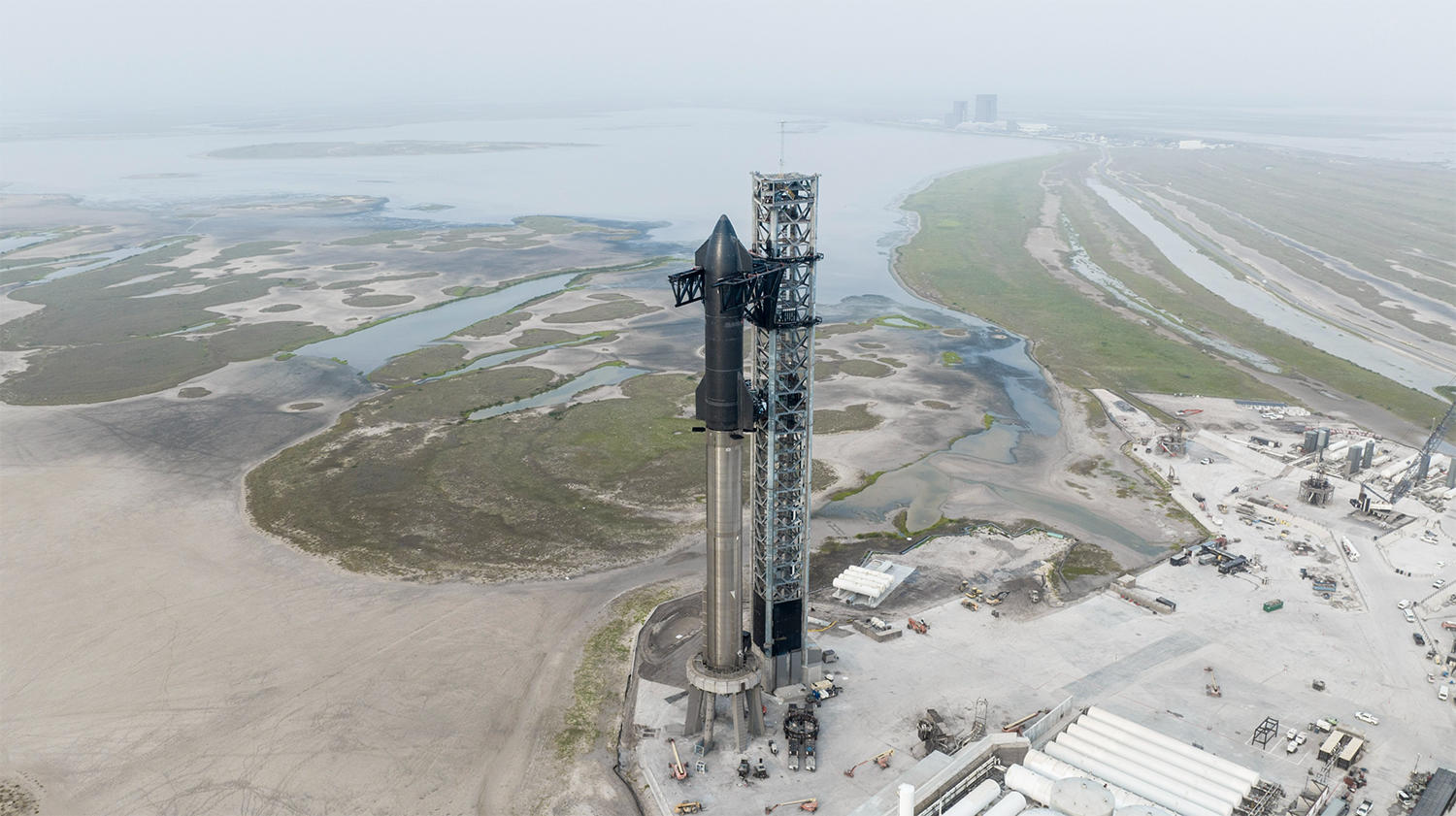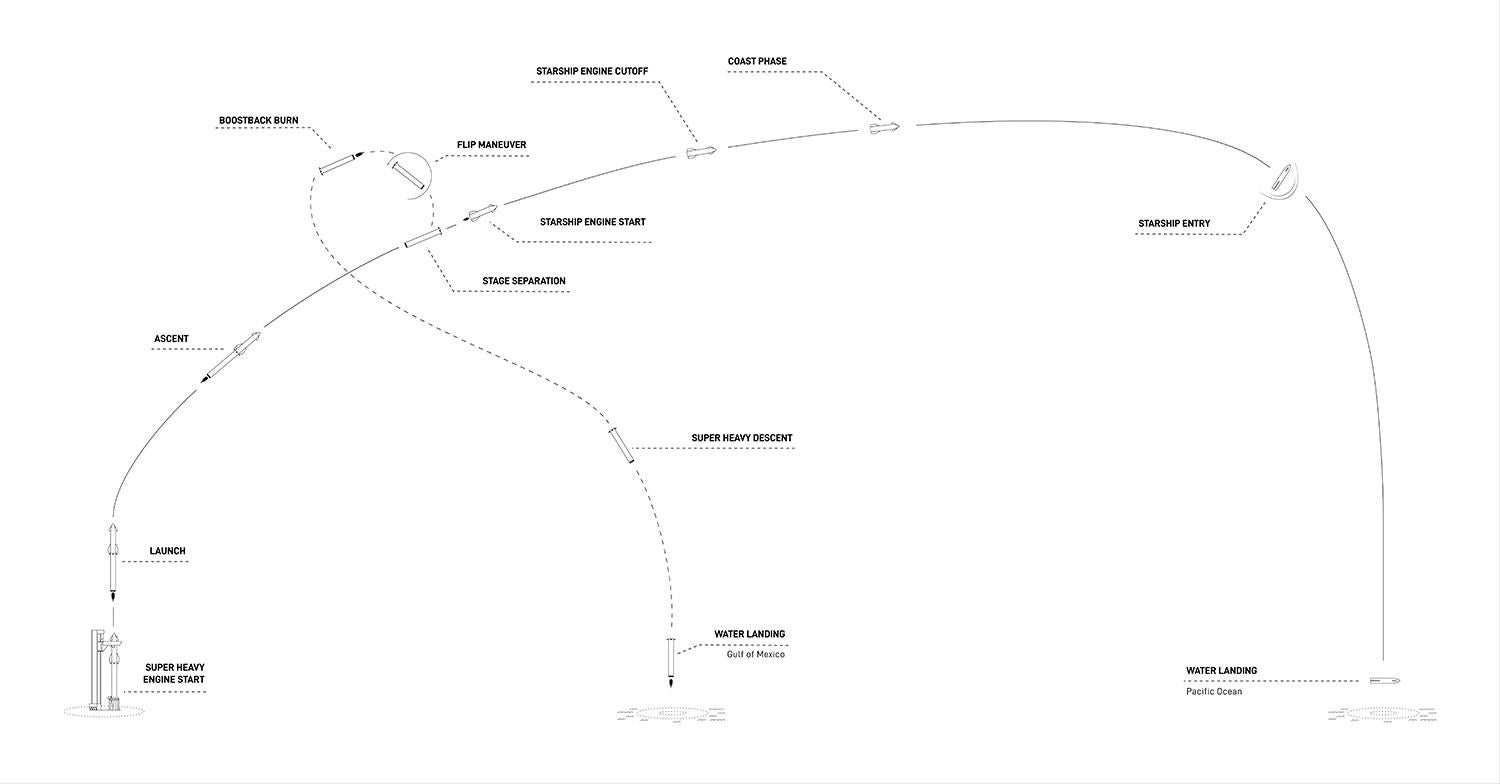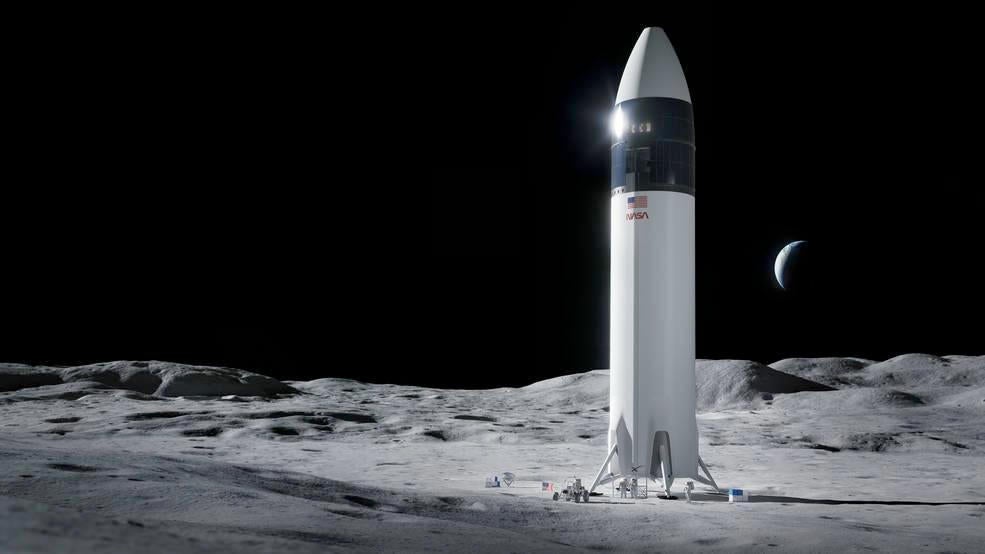The Federal Aviation Administration on Friday granted a license to SpaceX that clears the California rocket builder to launch its gargantuan methane-powered Super Heavy/Starship rocket on its first unpiloted test flight to space as early as Monday.
"After a comprehensive license evaluation process, the FAA determined SpaceX met all safety, environmental, policy, payload, airspace integration and financial responsibility requirements," the agency said. "The license is valid for five years."
SpaceX immediately tweeted that it was "targeting Monday, April 17, for the first flight test of a fully integrated Starship and Super Heavy rocket from Starbase in Texas," referring to the company's sprawling test facility at Boca Chica on the Texas Gulf Coast.
The Super Heavy/Starship, known collectively simply as "Starship," is the largest, most powerful rocket ever built, standing 394 feet high and measuring 29.5 feet wide.
It is capable of generating a staggering 16.7 million pounds of thrust at liftoff from its 33 SpaceX-designed Raptor engines, twice the power of NASA's Space Launch System moon rocket.
The Super Heavy first stage alone stands 23 stories tall, while the Starship upper stage, designed to carry cargo, passengers or both, towers another 164 feet and is equipped with six Raptor engines.
Both stages are fully reusable, designed to fly themselves to rocket-powered landings at the launch site or elsewhere.
The required FAA license came after more than 500 days of painstaking analysis, environmental impact assessments, public comment and government mandated mitigations to minimize the impact of launch — or a catastrophic failure — on public health, property and the coastal environment around the Boca Chica launch site.
"A mishap is part of our businesses, and it's a pretty realistic possibility," said an FAA official. "We see this quite often with first time launches of new and somewhat unproven space vehicles, (at) the rate of about 11%. So to see a mishap here would not be particularly unusual.
"Our job, of course, is to ensure that if a mishap occurs, that that mishap does not impact the public in an adverse manner. So that's the focus that we have in our licensing activity."
For its initial test flight, the Starship will launch to the east, powered out of the dense lower atmosphere by the Super Heavy booster. The FAA will help ensure air and sea lanes are closed along the flight path, and re-opened as quickly as possible after launch.
After about two-and-a-half minutes, the Super Heavy will fall away to make a powered descent to splashdown in the Gulf of Mexico, 20 miles off the coast of Texas, using aerodynamic "grid fins" for steering like smaller Falcon 9 boosters do.
The Super Heavy will not be recovered on this flight, but the data collected will be fed into plans for eventual booster landings at the same pad that launched them.
After discarding the Super Heavy stage, the Starship will continue the climb to space, flying over the Florida Straits to an eventual altitude of about 150 miles, according to the FAA. It will not enter orbit. Instead, it will descend along a ballistic trajectory to re-entry over the Pacific Ocean.
The Starship will fall to an unpowered, destructive splashdown near Hawaii. But SpaceX presumably will collect valuable flight data on the ship's ability to withstand re-entry heating and to carry out aerodynamic maneuvers using moveable stabilizing fins, verifying the system's ability to control the big rocket.
For operational flights, the Starship will re-enter the atmosphere belly first, using heat shield tiles to protect it from the blazing temperatures generated by atmospheric friction. Shortly before touchdown, three engines will re-ignite, the ship will flip up to vertical and settle to a tail first landing.
SpaceX has built towering, 50-story-tall launch gantries at both Boca Chica and the Kennedy Space Center in Florida designed to send Starship's on their way and to catch returning Super Heavies with two huge mechanical arms dubbed "chopsticks."
"This will be the first flight test of a fully integrated Starship and Super Heavy rocket, a fully reusable transportation system designed to carry both crew and cargo to Earth orbit, help humanity return to the moon and travel to Mars and beyond," SpaceX said on its web site.
"With a test such as this, success is measured by how much we can learn, which will inform and improve the probability of success in the future as SpaceX rapidly advances development of Starship."
However the flight test works out, it will mark a major milestone for SpaceX — which views the Starship as the key to the company's future — and for NASA, which is paying SpaceX billions to develop a variant of the Starship to carry astronauts to the surface of the moon in the agency's Artemis program.
An early test flight failure would be an obvious setback for SpaceX, planned civilian flights and for NASA's moon program. But given SpaceX's rapid-fire launch-and-repeat flight test philosophy, a single failure likely could be overcome in relatively short order.
But how the test program might play out, or even how many flights will be required before passengers are allowed to fly, remains to be seen.
Article From & Read More ( FAA clears the way for maiden flight of SpaceX Starship rocket - CBS News )https://ift.tt/Pgx89UO
Business
Bagikan Berita Ini



















0 Response to "FAA clears the way for maiden flight of SpaceX Starship rocket - CBS News"
Post a Comment